
Tasmanian Mountain Pepper (Tasmannia lanceolata) is a small tree native to Tasmania and mountainous parts of southeastern Australia. There
are both male and female plants and so only the females produce the distinctively spicy hot pepperberries. However, the leaves
(dried or fresh) can also have high concentrations of the hot polygodial and so can also be used to enhance the flavours of dishes. There
are huge differences in the level of 'heat' produced by individual plants in the bush so buy with care (click here).
Male and Female plants. Mountain pepper plants are either male or female, and of course, both are needed in order for
the female plants to produce the spicy hot pepperberries which are dried after harvest to produce the grindable peppercorns.
The spicy leaves can come from both sexes. See our video of male and female flowering in our plantation by clicking here.
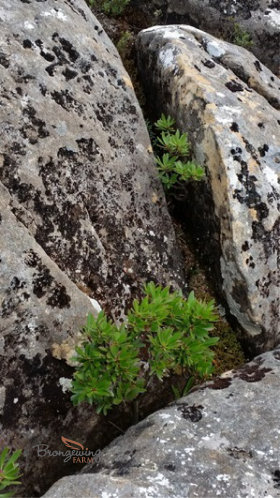
Tasmanian Mountain Pepper growing at 1100 m elevation on Mt. Arthur
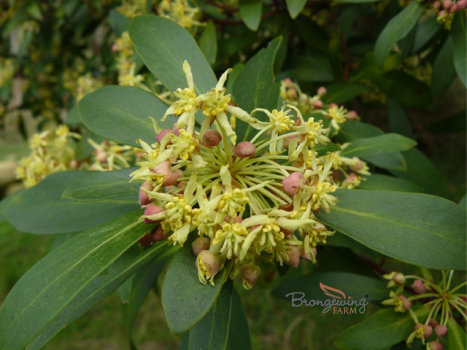
Male flowers:
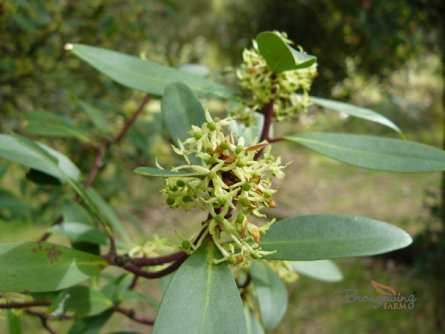
Female flowers:
Tasmanian Mountain Pepper ready for Harvest. The dark, almost black-skinned pepperberries are really deep, dark red.
When crushed, the pepperberries can add colour as well as flavour to cooking, vinegars, etc. Freeze-dried pepperberries retain
most of the colour and flavours of the fresh berries; the air-dried peppercorns - less so (see our information of drying techniques).
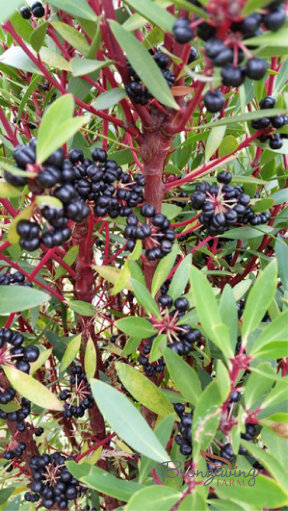
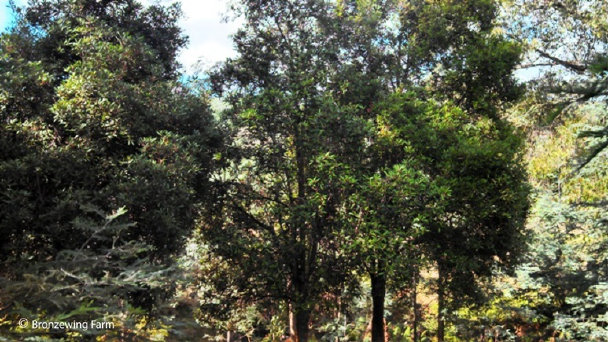
7 m tall Tasmanian Mountain Pepper growing in a bush block on Bronzewing Farm
- Cock, I.E. 2013. The phytochemistry and chemotheraoeutic potential of Tasmannia lanceolata (Tasmanian Pepper): A review. Pharmacognosy Communications, 3(4), 13-25.
- Zhao, J. & Agboola, S. 2007. Functional Properties of Australian Bushfoods. RIRDC Publication No 07/030
- Menary, R.C., Dragar, V.A., Thomas, S. & Read, C.D. 2003. Mountain Pepper Extract Tasmannia lanceolata Quality stabilisation and registration. RIRDC Publication No 02/148

© Bronzewing Farm 2013-24
There are some good publications of the biochemistry of the Mountain Pepper's heat:



